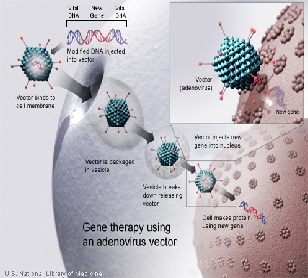
Copyright 2023 Ephyra Networks Inc ©, All Rights Reserved

Gene therapy entails the delivery of new genetic information into an individual’s cells and tissues to correct a hereditary disease by replacing the defective gene with the functional one. The new genetic material can also be used to influence or alter the way a cell behaves and provides it with a new function. Gene therapy uses vectors which carry the material into the cell. The most common vector is an engineered virus which has been rendered incapable of replication and is now carrying the gene product..

All viruses bind to their hosts and introduce their genetic material into the host cell as part of their replication cycle. This genetic material contains basic “instruction” of how to produce more copies of these viruses, hijacking the body's normal production machinery to serve the needs of the virus. The host cell will carry out these instructions and produce additional copies of the virus, leading to more and more cells becoming infected. Gene therapy scientists use this vehicular “feature” of viruses to carry “good” genes into a human cell (for instance, insulin production in the case of diabetics).
The majority of clinical trials have used adenoviral (see diagram above from the National Institutes of Health, USA) and retroviral vectors to deliver the genetic material. Numerous problems still exist that prevent gene therapy using viral vectors. However, this basic mode of gene introduction currently shows much promise.
Non-
How can we help you?